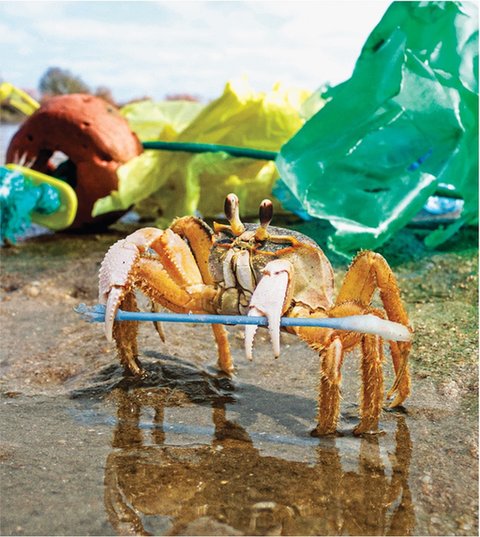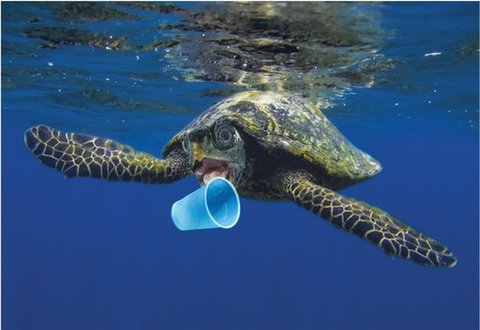
Acrabholdsacottonswabitfoundona beach.
DangertoAnimals
Oceanplastickillsmillionsofmarineanimalseachyear.Nearly700specieshavebeenaffectedbyit.Thisincludesendangered species.
Somearestrangledbyfishingnetsorsix‑packrings.Seaturtlesgulpdownplasticbags.Theythinktheplasticisajellyfish.Seabirdshavediedwithstomachsfullofplastic.Microplastic, ortinyplasticpieces,arealsoathreatto animals.

Aseaturtlegetsreadytoeataplastic cup.
Seabirdsscoopupfloatingplasticpellets.Thepelletslooklikefisheggs.Parentbirdsspituptheplasticastheyfeedtheiryoung.Butplasticdoesnotprovideenergyornutrients.Itkillsthe animals.
Incrabs,microplasticsremaininthegutmuchlongerthanfooddoes.Thecrabseat.Buttheydon’tgetenoughnutritionto survive.

HyenasfindplasticinalandfillinEthiopia,acountryin Africa.
LookingfortheSource
Tokeepplasticoutofourocean,weneedtoknowhowit’sgettingthere.Weproducealotofplastic.Butwedon’thaveagoodplanfordealingwithplastic garbage.
ResourceeconomistTedSieglersaystheplasticproblemcanbesolved.“Thisisn’taproblemwherewedon’tknowwhatthesolutionis,”he says.
Sieglerhastwomainsuggestions.First,designnewplasticsandnewplasticproductsthatarebiodegradableor recyclable.
Second,buildbetterwasteremovalsystems.Havecompaniespayapennyoneverypoundofplastictheymanufacture.Usethatmoneytobuildbettergarbage systems.
